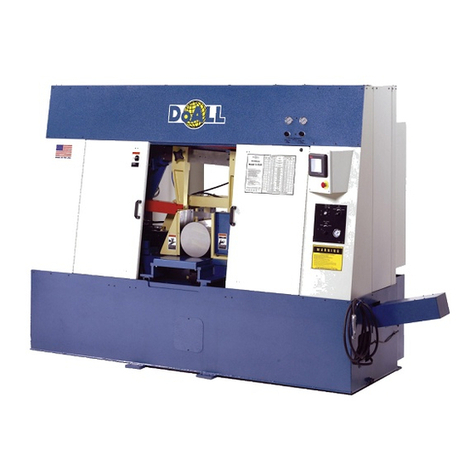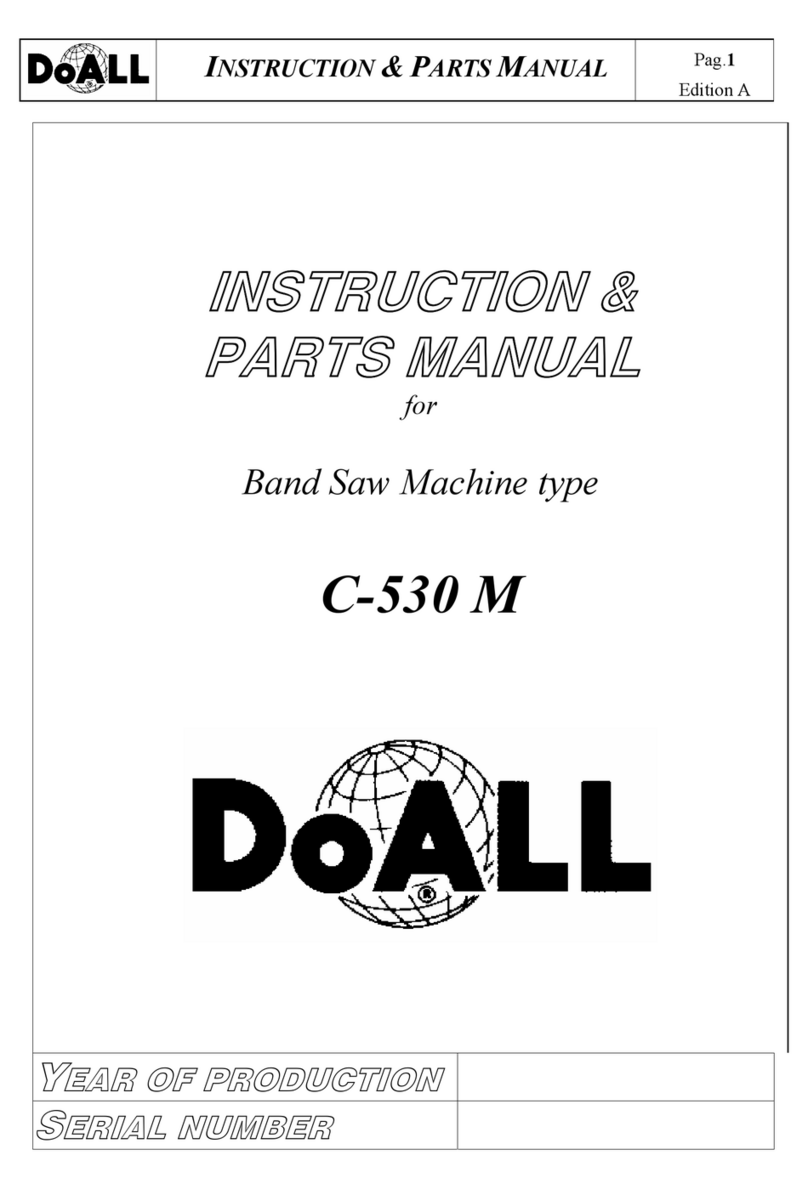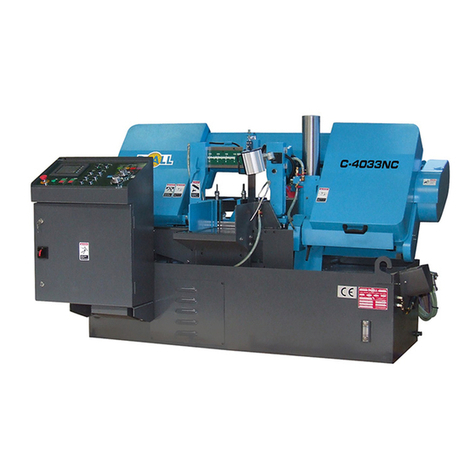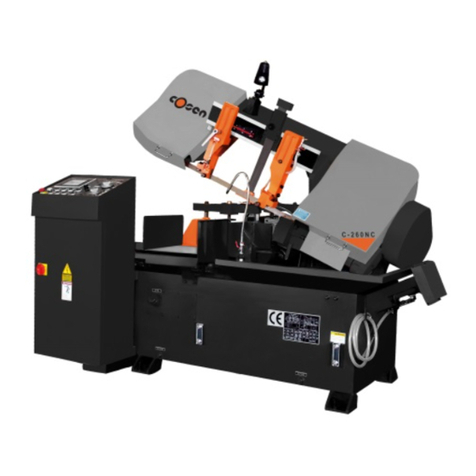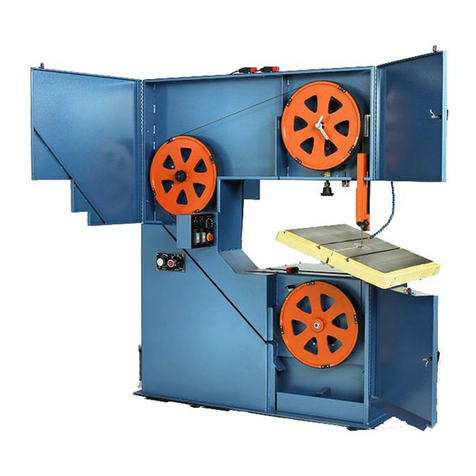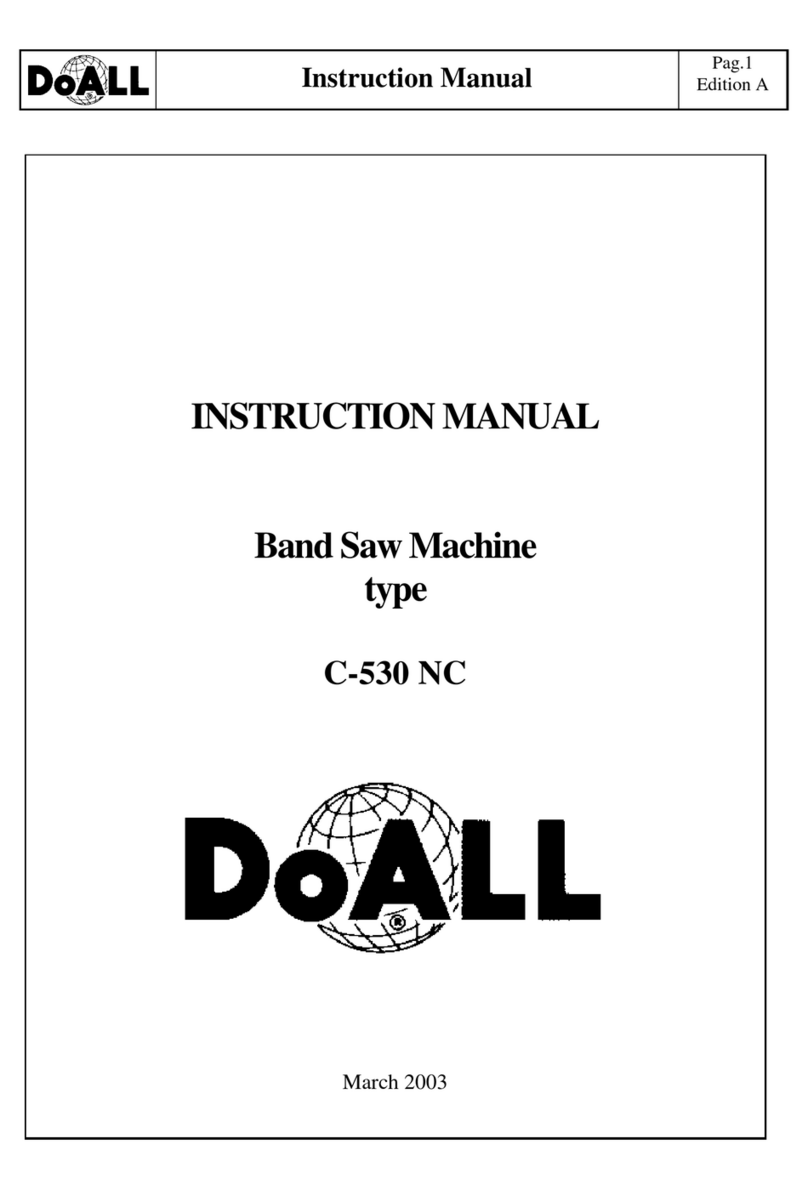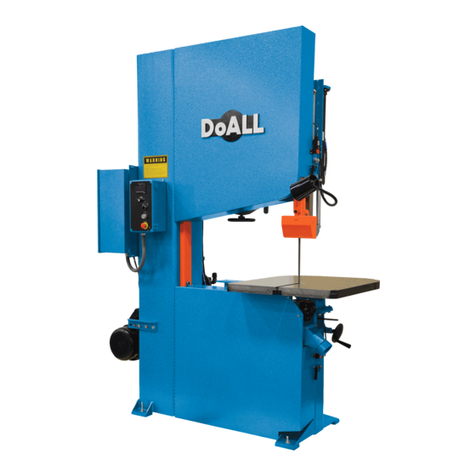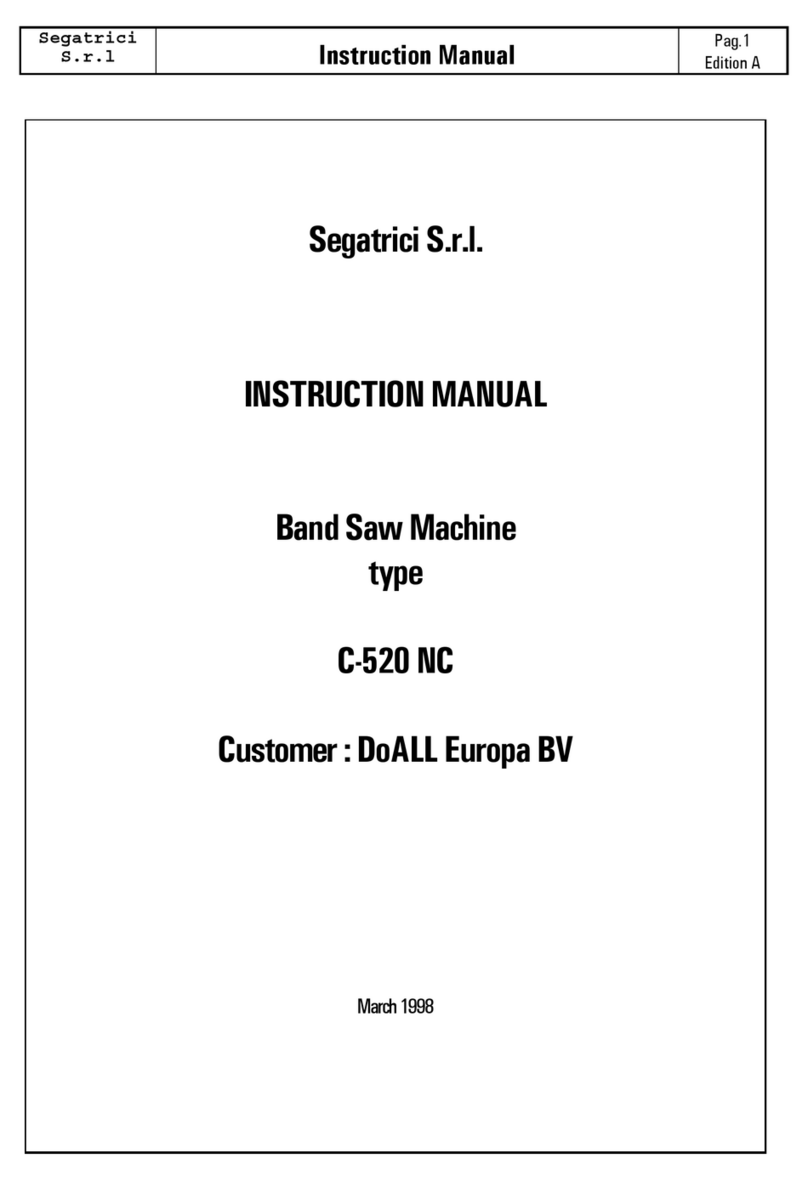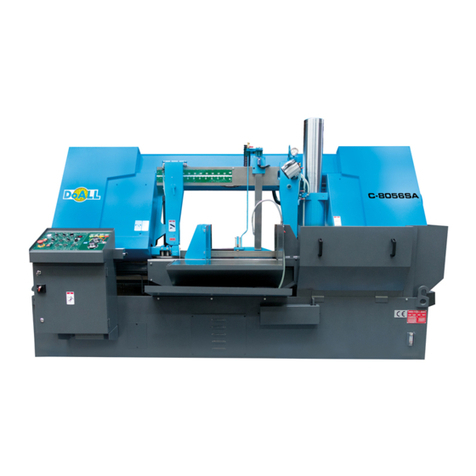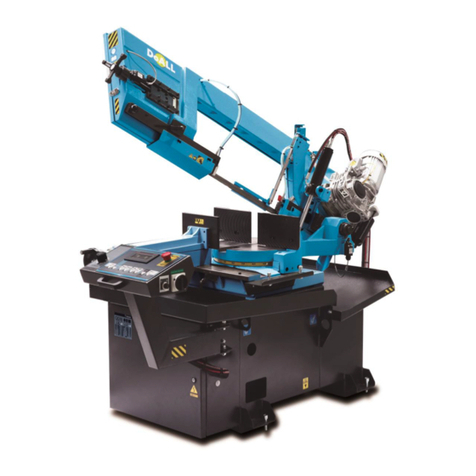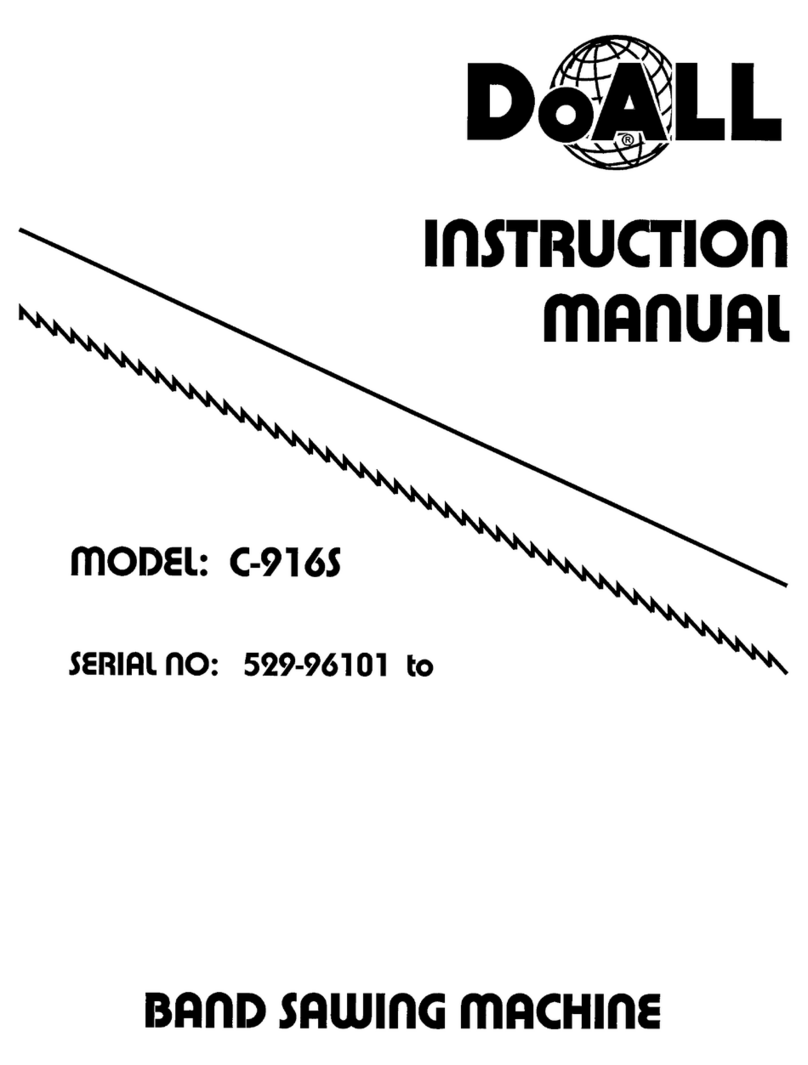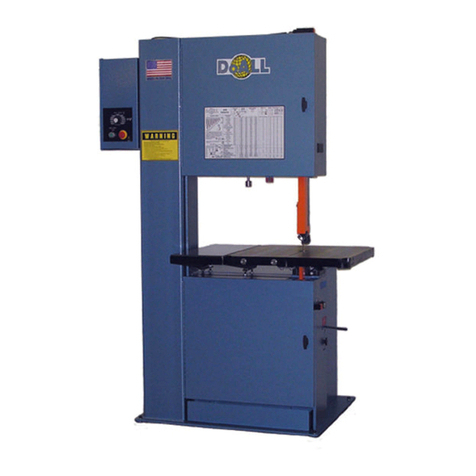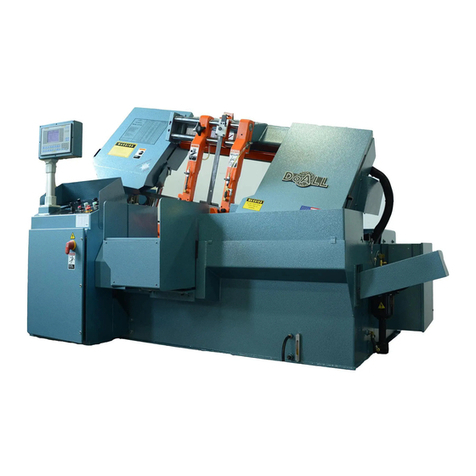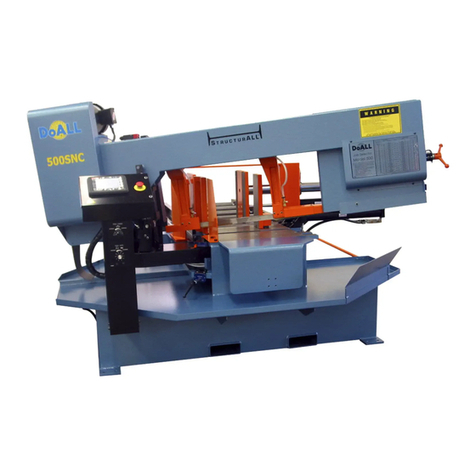
ii
TABLE OF CONTENTS
MACHINE DIMENSIONS
Floor Plan/Foot Pad Layout .................................. 1
Front Views ........................................................... 2
Top View ............................................................... 3
MACHINE FEATURES
Front View ............................................................ 4
Side and Rear Views ............................................ 5
Proximity and Limit Switch Locations ................... 6
INSTALLATION
Location ................................................................ 7
Unpacking ............................................................. 7
Cleaning ............................................................... 7
Lifting .................................................................... 7
OSHA Notice!! ...................................................... 7
Machine Installation .............................................. 7-8
Electrical Installation ............................................. 8
Plant Air Installation (If Required) ......................... 8
Preparation for Use .............................................. 8
OPERATION
Safety Precautions ............................................... 9
Using the Saw Band Selector ............................... 9
Cutting Capacities ................................................ 9
Machine Controls ................................................. 10
Operator Workstation ........................................... 10-15
Saw Band Preparation .......................................... 15-17
Saw Guide Arm Adjustment .................................. 17
Feed Force Adjustments ....................................... 17
Work Height Adjustment ....................................... 17-18
Saw Head Positioning For Angle Cuts .................. 18
Flood Coolant System .......................................... 18
Dry Cutting ............................................................ 18
Hydraulic System .................................................. 19
Band Brush and Chip Removal ............................ 19
Typical Operation Procedures .............................. 19-21
LUBRICATION
Lubrication Chart .................................................. 22
Lubrication Diagrams ............................................ 23
MAINTENANCE
Replacing Saw Guide Inserts ............................... 24
Adjust or Replace Saw Band Guide Rollers ......... 24
Hydraulic System .................................................. 24-25
Flood Coolant System .......................................... 25
Machine Cleaning ................................................. 25
Machine Alignment ............................................... 25
Band Brush ........................................................... 26
Band Tension Measurement ................................. 26
Wear Plate Replacement ...................................... 26
Band Drive Gearbox ............................................. 26
Bandwheels .......................................................... 26-27
Cleaning Chip Trough or Chip Auger .................... 27
Counterbalance Spring ......................................... 27
Electric Motors ...................................................... 27
Mist Lubricator ...................................................... 27
TROUBLE SHOOTING ................................ 28-31
ACCESSORIES
Roller Stock Conveyor .......................................... 32
Vertical Guide Rollers ........................................... 32
Nesting Fixture (Machines 104 thru 108) ............. 32-33
Nesting Fixture (Machines 109 and on) ................ 34-35
Variable Vise Pressure ......................................... 35
Chip Auger ............................................................ 35-36
Band Mist Lubricator ............................................. 36
Worklight ............................................................... 36
Laser Line Option ................................................. 36
Material Handling Equipment ............................... 36
How to read your serial number:
